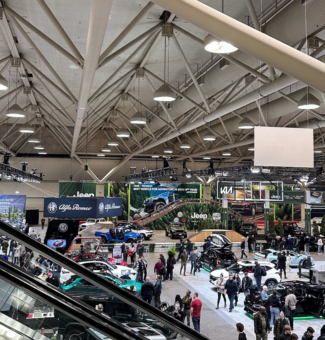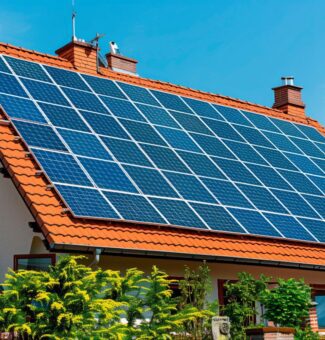The history of EV charging connectors.
We all understand the thrill of zero to 60 kilometres in a matter of seconds, but what about the sizzle that comes from zero to fully charged? EV charging connectors are undoubtedly the life force of electric vehicles (EVs). From the start of CHAdeMO to the versatile CCS, and now with the sleek Tesla-born NACS, each new connector has powered up our search for better ways to move sustainably.
These unsung heroes don't just fuel our commutes; they carry the power to transform how we travel. From CHAdeMO to NACS, prepare to uncover the electrifying story of EV charging connectors, the building blocks of our electric future that give EVs the power they need to keep rolling!
Trailing back to CHAdeMO.
In the late 2000s, CHAdeMO led the way in fast-charging technology. CHAdeMO, a term derived from "Charge de Move" or "charge for moving," is an electric vehicle charging standard that originated in Japan. The phrase is also a pun on "O cha demo ikaga desuka" in Japanese. This translates to "How about some tea?", which implies that the charging time for an electric vehicle would allow for the driver to have a cup of tea. CHAdeMO was a bold step forward initiated by Japanese manufacturers. Tokyo's automotive dream team, Nissan, Mitsubishi, and Toyota, along with the Tokyo Electric Power Company, brought this DC fast charging standard to the forefront.
This impressive connector was designed to stand out. The CHAdeMO plug allows rapid energy flow, making it the powerhouse of its time. It was the first real solution that allowed EV batteries to gulp down electricity much faster than the then-standard Level 2 AC chargers.

The rise of the CCS.
Europe and the US also wanted to participate in charging innovation. As a result, the Combined Charging System (CCS) entered the picture. A genuine blend of car chargers, the CCS is a fusion of European and American automotive brains. It sports a sleeker design and a two-in-one approach, adept in both AC and DC charging.
There are two types of CCS: Type 1, predominantly used in North America, and Type 2, which graces the roads of Europe. Both possess a set of DC power contacts brilliantly engineered beneath the main AC connector. It's like a multi-functional tool ready to handle various charging situations.

The current flows toward standardization.
As CCS continued to research and refine, so too did CHAdeMO. Over time, however, a common vision emerged within the industry: the need for a universal standard.
Here comes Tesla.
Initially, Tesla introduced their proprietary EV charging connector in North America, which was slimmer than both CHAdeMO and CCS. However, Tesla adopted the CCS standard in Europe, showing their support for a universal charging future.
Transition to NACS: a universal dream.
In 2022, Tesla announced a new little detail, the North American Charging Standard (NACS). NACS is essentially their cutting-edge patented connector rebranded with a vision to become the standard across EVs in North America. Its design astoundingly supports high-power charging with a smaller plug, making it practical and useful.
Additionally, Tesla opened the doors so other manufacturers could adopt NACS, potentially uniting the landscape of EV charging connectors like never before.
Today's EV charging connector landscape.
Currently, we're witnessing an intersection where CHAdeMO, CCS, and NACS coexist. CHAdeMO, while still used and supported (particularly by older Nissan Leafs and the likes), is slowly taking a backseat as CCS surges in popularity, bolstered by widespread adoption from American and European automakers.
Yet, even as CCS appears to have become the darling of the current EV charging scene, NACS looms with the potential to shake things up. Tesla's choice to share its tech could point to a future where we ditch the EV charging connector confusion.

The future of EV charging connectors.
What does the future hold? Will NACS seamlessly merge into the EV ecosystem, nudging aside CCS as the new gold standard? Will CCS flex its versatility and widespread support to stay in the game? Or will there be a plot twist with a surprise universal standard, as yet unrevealed, to connect us all cohesively?
Charting the charge ahead.
As the world of EVs keeps growing, the saga of EV charging connectors is a lively testament to innovation and the constant drive for betterment. The shift towards NACS might just be the spark we need for a smoother and more efficient future without adapters cluttering the trunk.
So, here's to the evolution of EV charging connectors, a story of power, and the perpetual pursuit of a more connected EV future. Keep learning with us; read our blog.
Timeline

Late 2000s, Japan: The advent of CHAdeMO.
- Introduction of the CHAdeMO charging standard.
- Developed by a collaboration between Nissan, Mitsubishi, Toyota, and the Tokyo Electric Power Company. CHAdeMO stood out as the first major rapid charging standard for electric vehicles, promoting the idea of quick charging.
Early 2010s, Europe and the US: The rise of CCS.
- Development and introduction of the Combined Charging System (CCS).
- A collaborative effort from European and American automakers introduced CCS, allowing AC and DC charging, signifying a significant step towards charge point versatility and efficiency.
Mid-2010s, global: Movement towards standardization.
- Both CHAdeMO and CCS makers initiate research towards a common charging standard.
- As EV adoption grew, the industry recognized the necessity for a unified charging standard, seeing advancements in CHAdeMO and CCS protocols.
2010s, North America: Tesla's proprietary connector.
- Tesla releases its own EV charging connector.
- Known for its slimmer design compared to CHAdeMO and CCS, Tesla's proprietary connector marked a significant innovation in the market, initially diverging from the push for a unified standard.
2022, North America: Introduction of NACS.
- Tesla announced the North American Charging Standard (NACS).
- Tesla repurposed its proprietary connector into NACS, aiming to set a new standard across North America. The move included opening up the technology to other manufacturers, potentially guiding towards industry-wide adoption.
Current landscape.
- Coexistence of CHAdeMO, CCS, and NACS.
- As of today, all three standards are in use, with CHAdeMO primarily supporting older models like the Nissan Leaf, CCS finding widespread adoption across the US and Europe, and NACS establishing a foothold with the potential for future unification of charging standards.
The future of EV charging.
- The potential shift towards a universal charging standard.
- The industry stands at a crossroads, with the evolution of NACS challenging the dominance of CCS and the legacy of CHAdeMO. This hints at a future where one standard might prevail for global use, simplifying and enhancing the EV charging experience.
Join our electric community.
Be the first to hear about Ivy tips, promotions, and network updates.


